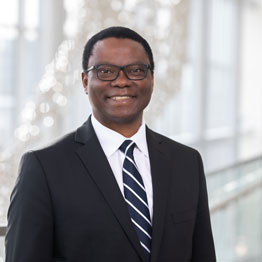

Computation-Enhanced Surgery and Intervention: Provocative Questions
Michael I. Miga, Ph.D.
Harvie Branscomb Professor
Professor of Biomedical Engineering, Radiology, Neurosurgery, and Otolaryngology
Vanderbilt University
Abstract: While modern medical imaging coupled to contemporary image processing and informatics has allowed for dramatic expansions of diagnostic information, similar advances in procedural medicine have lagged due to systematic barriers associated with conventional practice and clinical translational research. This reality motivates many questions, both exhilarating and yet sometimes provocative. The assertion in this talk is that treatment platform technologies of the future will need to be intentionally designed for the dual purpose of treatment and discovery. While it is difficult to be prescient on the forms that these forward-thinking systems will take in precision medicine, it is clear that new requirements associated with data integration/acquisition, automation, real-time computation, and cost will likely be critical factors. Exemplar surgical and interventional technologies will be discussed that involve complex biophysical models, methods of automation and procedural field surveillance, efforts toward data-driven procedures and therapy forecasting, and approaches integrating disease phenotypic biomarkers. The common thread to the work is the use of computational models driven by sparse procedural data to enable guidance and therapy delivery. Finally, the talk concludes by discussing operating rooms and interventional suites as places of investigation and the impact of clinical immersion in engineering training paradigms.
Bio: Dr. Michael I. Miga received his Ph.D. from Dartmouth College specializing in biomedical engineering. He joined the faculty of the Department of Biomedical Engineering at Vanderbilt University in 2001 and is the Harvie Branscomb Professor. He is a Professor of Biomedical Engineering, Radiology and Radiological Sciences, Neurological Surgery, and Otolaryngology – Head and Neck Surgery. He is director of the Biomedical Modeling Laboratory, and co-founder of the Vanderbilt Institute for Surgery and Engineering (VISE, www.vanderbilt.edu/vise). He has been PI on several NIH grants concerned with image-guided brain, liver, kidney, and breast surgery. He is also PI and Director of a novel NIH T32 training program entitled, ‘Training Program for Innovative Engineering Research in Surgery and Intervention’ that is focused on the creation of translational technologies for treatment and discovery in surgery and intervention. He also was a co-inventor of the first FDA cleared image guided liver surgery system. Dr. Miga is an AIMBE and SPIE Fellow and has served as a charter member of the Biomedical Imaging Technology (BMIT-B) and the Bioengineering, Technology, and Surgical Sciences (BTSS) Study Sections at NIH. His research interests are in computational modeling, inverse problems/computational imaging, soft-tissue biomechanics/biotransport, technology-guided therapy, image/imaging-guided surgery and intervention, and data-driven procedural medicine.

Fluorescence Image-Guided Cancer Resection: From Bench to Bedside
Samuel Achilefu, Ph.D.
Inaugural Department Chair of Biomedical Engineering
Lyda Hill Distinguished University Chair in Biomedical Engineering
Professor of Biomedical Engineering, Harold C. Simmons Comprehensive Cancer Center, and Radiology
University of Texas Southwestern Medical Center
Abstract: Surgeons still rely on vision and touch to distinguish cancerous from healthy tissue, often leading to incomplete tumor removal that necessitates repeat surgery or favors relapse. To address these issues, we have developed Cancer Viewing Glasses (CVGs) that can provide real-time intraoperative visualization of tumors and sentinel lymph nodes without disrupting the surgical workflow. The CVGs were designed to detect near-infrared fluorescence (NIRF) from cancer-targeting molecular probes. Both NIRF and normal visible light used in the operating room are projected to a head-mounted display. The optical see-through CVGs prototype allows direct visual access to the surgical field while projecting NIRF to the eyes under normal operating room light conditions. Aided by a new tumor-targeted NIR fluorescent molecular probe capable of accumulating in most solid tumors, CVGs provided real-time image guidance for complete tumor resection in subcutaneous and metastatic mouse models and cancer patients. Ongoing clinical studies demonstrate that combining light, molecules, and CVG enhances high throughput surgery with improved accuracy.
Bio: Dr. Samuel Achilefu is the inaugural chair and professor of the Department of Biomedical Engineering at the University of Texas Southwestern (UTSW) in Dallas. He holds the Lyda Hill Distinguished University Chair and other faculty appointments as a professor of radiology and of the Simmons Comprehensive Cancer Center. Dr. Achilefu is a member of National Academy of Medicine, fellow of the National Academy of Inventors, and member of the National Advisory Council for Biomedical Imaging and Bioengineering at the National Institutes of Health. He is a fellow of many professional societies, including the SPIE, Optica, AIMBE, and AAAS. Before joining UTSW in February 2022, he spent over 20 years at Washington University in St. Louis, MO. Dr. Samuel Achilefu is an expert in the molecular imaging of human diseases, utilizing multimodal imaging methods to address imaging challenges, focusing on optical imaging platforms. His current research interests include image-guided cancer surgery, portable imaging devices, and nanotechnology. Through a multidisciplinary team of investigators, he has guided multiple research endeavors from concept to clinic. Dr. Achilefu is an inventor of 67 U.S. patents, published over 300 scientific papers, and received over 30 local, national, and international honors and awards for research excellence.
